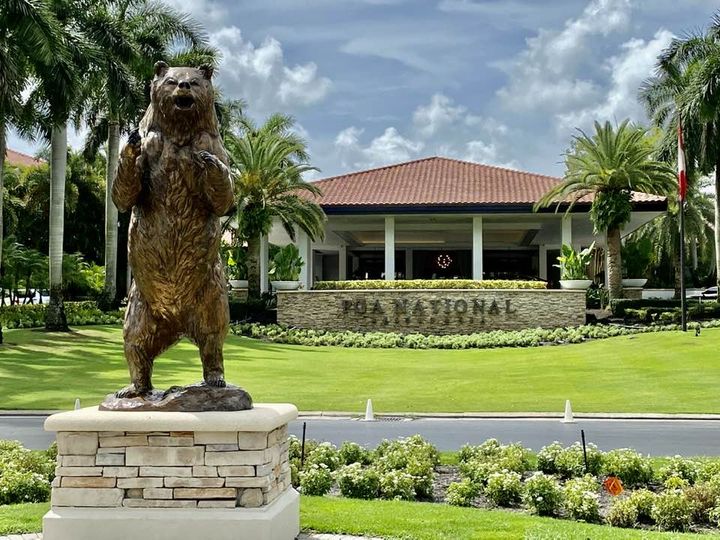It’s sometimes difficult to identify where all the money goes when a resort undergoes a significant $100 million renovation. Count PGA National Resort in the category of “dollars well spent,” according to Toronto-based Brookfield Asset Management, which owns the property.
The centerpiece resort in Palm Beach Gardens, FL, PGA National Resort underwent a redo designed to lift the property from a sterile golf resort factory to a vibrant, guest-friendly resort that exudes the high-end lifestyle of the “Gardens” and north Palm Beach County. Brookfield in 2018 reportedly paid $233 million for the 339-room resort.
“We’re building experiences for our guests, whether it’s sports activities, family gatherings or business meetings,” said Philippe Thevenet, director of sales and marketing at PGA National Resort. “We’re not just a golf resort, but an all-encompassing resort. We don’t want to be perceived as a ‘factory’ that opens its doors with no service.”
PGA National Resort Managing Director Patrick Brophy has said a goal of the property’s renovation was to “disrupt the misconception of a one-dimensional golf resort with a 360-degree luxury travel experience.” With a new lobby design, new front entrance, renovated guest rooms, two new celebrity-chef driven restaurants and potentially game-changing golf course designs, that misconception no longer exists.
Even the name is new, having gone from “PGA National Resort & Spa” to simply “PGA National Resort.” The resort’s 40,000 square-foot spa, however, remains one of the top destination spas in the Southeast. The Spa at PGA National Resort features such amenities as a couple’s treatment room and two Himalayan salt rooms. Acting as a “resort within the resort,” the spa offers a comprehensive menu of restorative treatments designed to nurture an openness to healing, balance and growth.
The decision to remove “spa” from the name, Thevenet, said, was to make the resort “more encompassing” to guests. “It’s almost implied now for guests looking for an experience,” he said.
The same might be said of golf at PGA National, although the resort’s legacy as a premier golf resort destination in Florida and beyond goes back more than 40 years.
PGA National, originally built by South Florida developer E. Llwyd Ecclestone Jr in 1980, has a history that includes hosting the Ryder Cup (1983), PGA Championship (1987) and Senior PGA Championship (1982-2000).
The resort has six golf courses—the most of any single resort in Florida—highlighted by the Jack Nicklaus-designed Champion, home to the PGA Tour’s annual Honda Classic. The course recently underwent a complete overhaul of its bunkers to prepare for next year’s event.
Led by Nicklaus Design, each of the bunkers on the “Champ” are being equipped with new subsurface drainage, “Better Billy Bunker” liners, and G-Angle sand.
“We had very ‘old school’ bunkers, so the new bunkers are really cool to see,” said PGA National Resort Club Manager Jane Broderick. “The feedback that we had received from the Tour over the years was an inconsistency in the bunkers. Now we have fixed that for players of all kinds.”
The most significant change to the resort’s golf operations, however, has been the creations of the Staple and Match courses. Designed by Andy Staples, each course is a testament to ownership’s commitment to a family-friendly environment.
With The Staple, for example, Staples created what might be the world’s most informal golf course. No hole is more than 160 yards long; players are guided to the next hole by the directions of Adirondack chairs; and there are no formal tee markers. If a player wants to only chip and putt around the greens, that’s fine. If he or she wants to play as far back as possible, that’s fine, too. Staples designed the course (walking only) with just enough nuances for golfers of every skill level.
The Staple’s figure-eight configuration has crossing holes at Nos. 2 – 3 and Nos. 7 – 8, with outdoor seating, with fire pits and a café/bar area.
The Staple, Broderick said, “Partners up with the vision of the property the ownership currently has. And it’s only going to get better. We’re seeing tons of families play it. The kids are having a blast, which is what we want. It’s a great way to practice your short game and it’s a course for beginners.”
The Match, meanwhile, offers players to basically tee it up anywhere they choose on the course and play any way—any format—they desire.
“Our motto is ‘changing the game again,’” Broderick said. “We’re not only changing the game with some of our new offerings, but changing the entire property and transforming it into something beyond someone’s imagination.”

